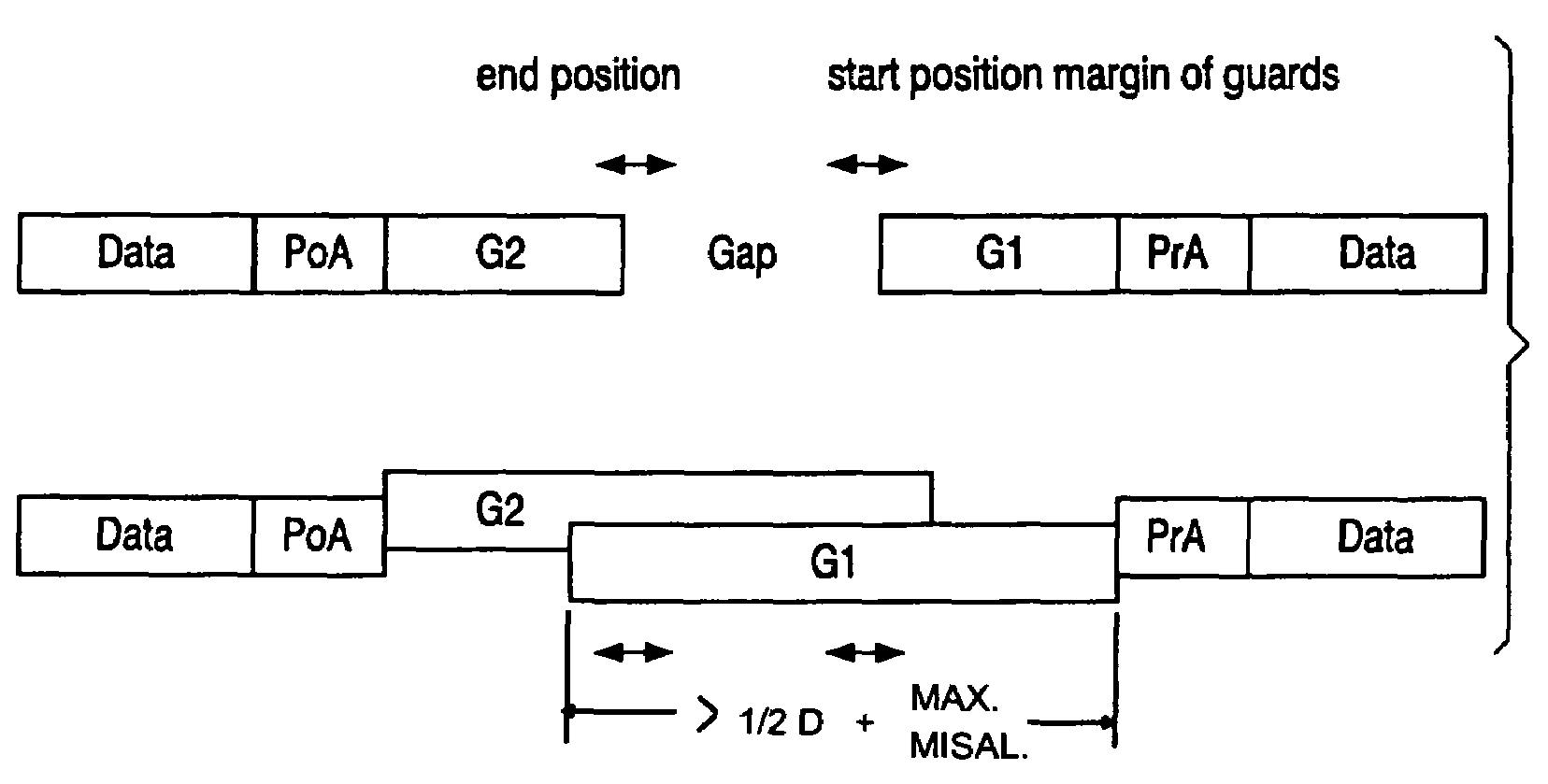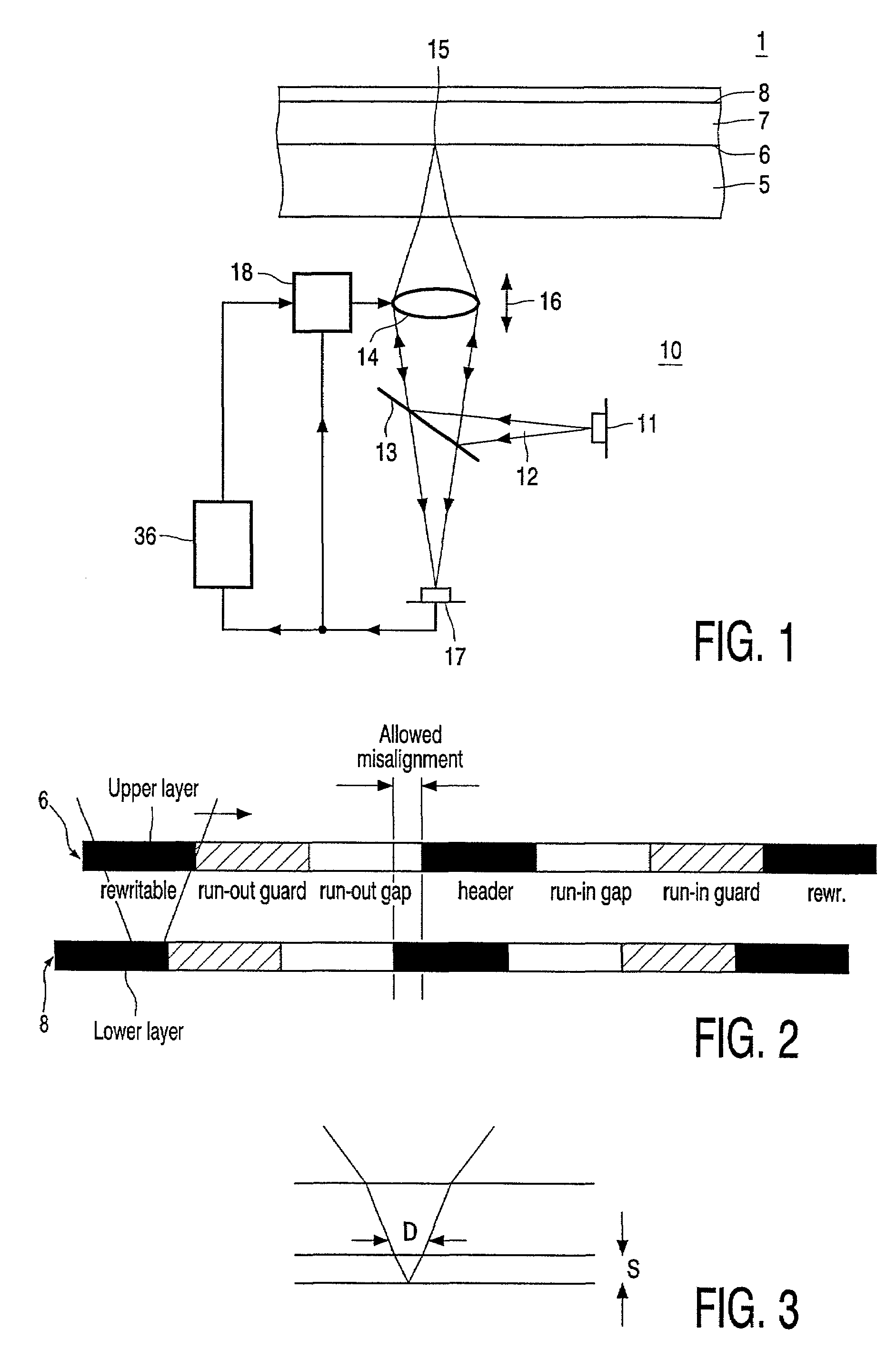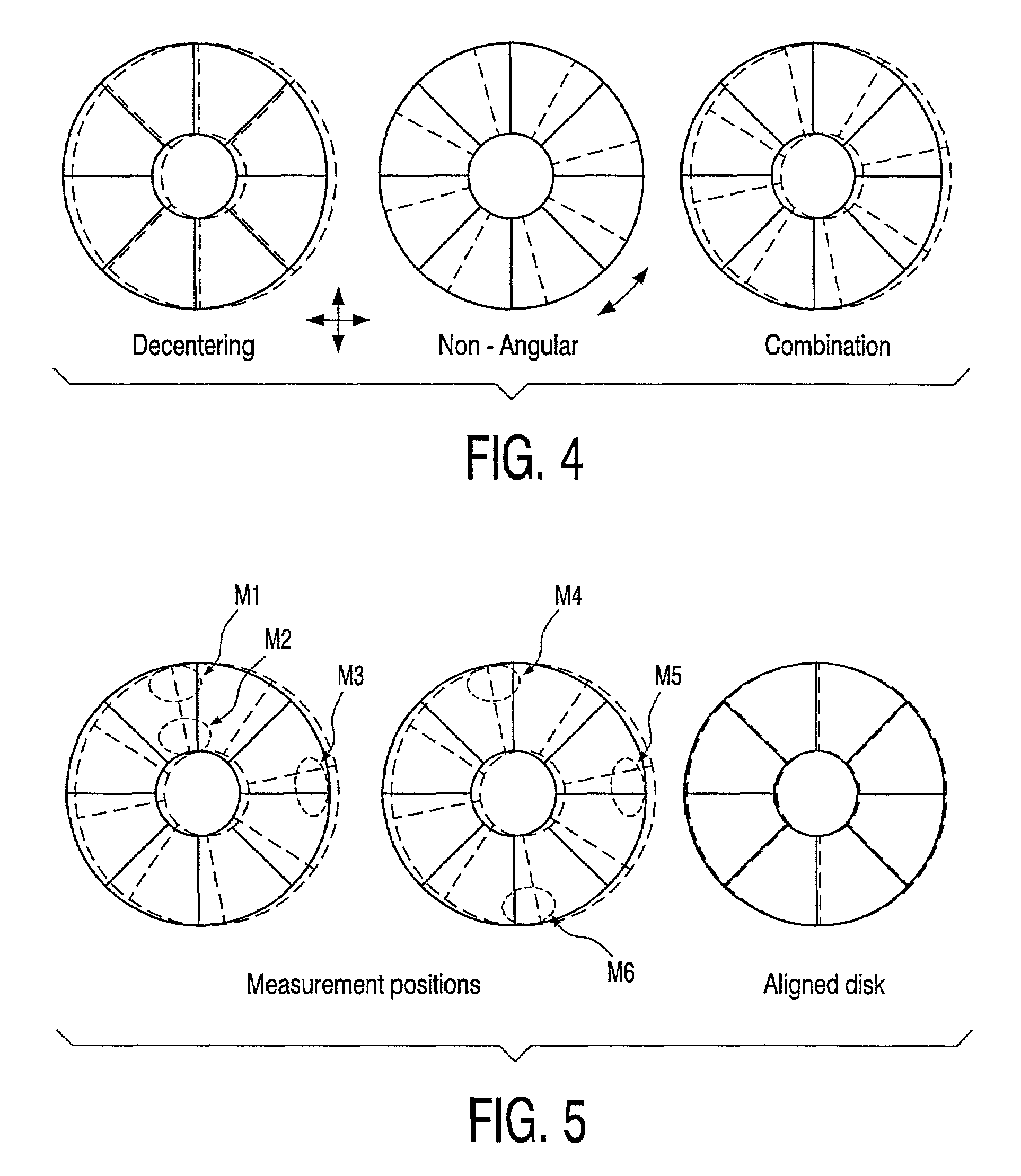Multi-layer record carrier and method of manufacturing thereof and recording thereon, with reduced transmission differences in the upper layer
a record carrier and multi-layer technology, applied in the field of multi-layer record carriers, can solve the problems of significant increase in the transmission area, read the lower layer, and increase the problem of the header area, so as to reduce the transmission differences in the upper information or recording layers, increasing the complexity of the system
- Summary
- Abstract
- Description
- Claims
- Application Information
AI Technical Summary
Benefits of technology
Problems solved by technology
Method used
Image
Examples
Embodiment Construction
[0036]The preferred embodiment will now be described on the basis of an optical disk player for recording on and reproducing from a dual layer optical disk.
[0037]FIG. 1 shows a cross-section of the dual layer record carrier 1 and a scanning head of a scanning device 10 for optically scanning the information stored in the record carrier 1. The record carrier 1 has a transparent substrate 5 provided with a first information layer 6 and a second information layer 8 substantially parallel thereto, separated by a transparent spacer layer 7. Although only two information layers are shown in this embodiment of the record carrier 1, the number of information layers may be more than two.
[0038]The scanning device 10 comprises a radiation source 11, for example, a diode laser which generates a radiation beam 12, such as a laser beam. The radiation beam is formed to a focusing spot 15 via a beam splitter 13, for example, a semitransparent plate, and a lens system 14, for example, an objective l...
PUM
| Property | Measurement | Unit |
|---|---|---|
| diameter | aaaaa | aaaaa |
| diameter | aaaaa | aaaaa |
| displacement | aaaaa | aaaaa |
Abstract
Description
Claims
Application Information
 Login to View More
Login to View More - R&D
- Intellectual Property
- Life Sciences
- Materials
- Tech Scout
- Unparalleled Data Quality
- Higher Quality Content
- 60% Fewer Hallucinations
Browse by: Latest US Patents, China's latest patents, Technical Efficacy Thesaurus, Application Domain, Technology Topic, Popular Technical Reports.
© 2025 PatSnap. All rights reserved.Legal|Privacy policy|Modern Slavery Act Transparency Statement|Sitemap|About US| Contact US: help@patsnap.com



